Big data | how many cafes are there in China? What is their living condition?

It's all too fast.
Today, "Ka Men" and "Meituan Dianping Research Institute" launched the first issue of beverage industry data report. The number of cafes in China exceeded 100000 in 2016, according to the report.
This is the worst time for coffee, this is the best time for coffee.
In the era of experience consumption, today, when the customer group is younger and iterative, there has never been a new category, which is so favored by young people. It is not only a symbol, a culture, but also a new industry full of vitality. Its consumer market is growing at an annual rate of 16%, several times the world average.
But at the same time, the coffee market development stage upside down, the new customer group portrait particularity, as well as the new technology iteration and impact. In this vast land with complex consumption habits, as a kind of parked product, coffee has never encountered such an unbalanced and rapidly iterative market ecology.
Fierce competition, increased shuffling speed, easy to open a shop and difficult to make money have become the common feelings of coffee shop owners.
At a time when the industry is surging and changing, we hope to provide some reliable tools for the industry.
"Ka Men" is a self-media that focuses on the coffee, tea and other beverage industries, deeply ploughing and integrating the industry in this small, vertically subdivided field. Meituan Dianping is the largest Internet platform for the service industry in China. Mobile users are 180 million monthly active users, and catering is its core business.
From now on, "Ka Men" and "Meituan Dianping Research Institute" have initiated the establishment of the "Beverage big data Center" and regularly launched the industry big data.
The first issue of the industry big data report is about the current situation of cafes in China. You will see:
@ how many peers are competing on the industry track? Which track are you on?
@ what changes are taking place in the pattern of the coffee industry?
@ what is the migration of consumers in the new era? Is it consistent with your customer group?
@ what are the opportunities to break through in terms of products, environment and services under the cover of the giants of the industry?
Data sampling description: the data are extracted from three time nodes on Meituan Dianping: January 15, June 15, 2016 and December 15, 2016. coffee data from four first-tier cities of Beijing, Shanghai, Guangzhou and Shenzhen and 12 key cities of Tianjin, Chongqing, Shenyang, Nanjing, Wuhan, Chengdu, Xi'an, Hangzhou, Qingdao, Zhengzhou, Xiamen and Dalian.
Some of the macro data are published by the International Coffee Organization and the National Bureau of Statistics.
1
Cafe explosion:
The number exceeded 100000, and the industry reshuffle intensified.
1
Cafe "explosion"
The number of cafes nationwide exceeded 10W, with negative growth for the whole of 2016, and a new round of reshuffle appeared in the industry in the second half of the year.
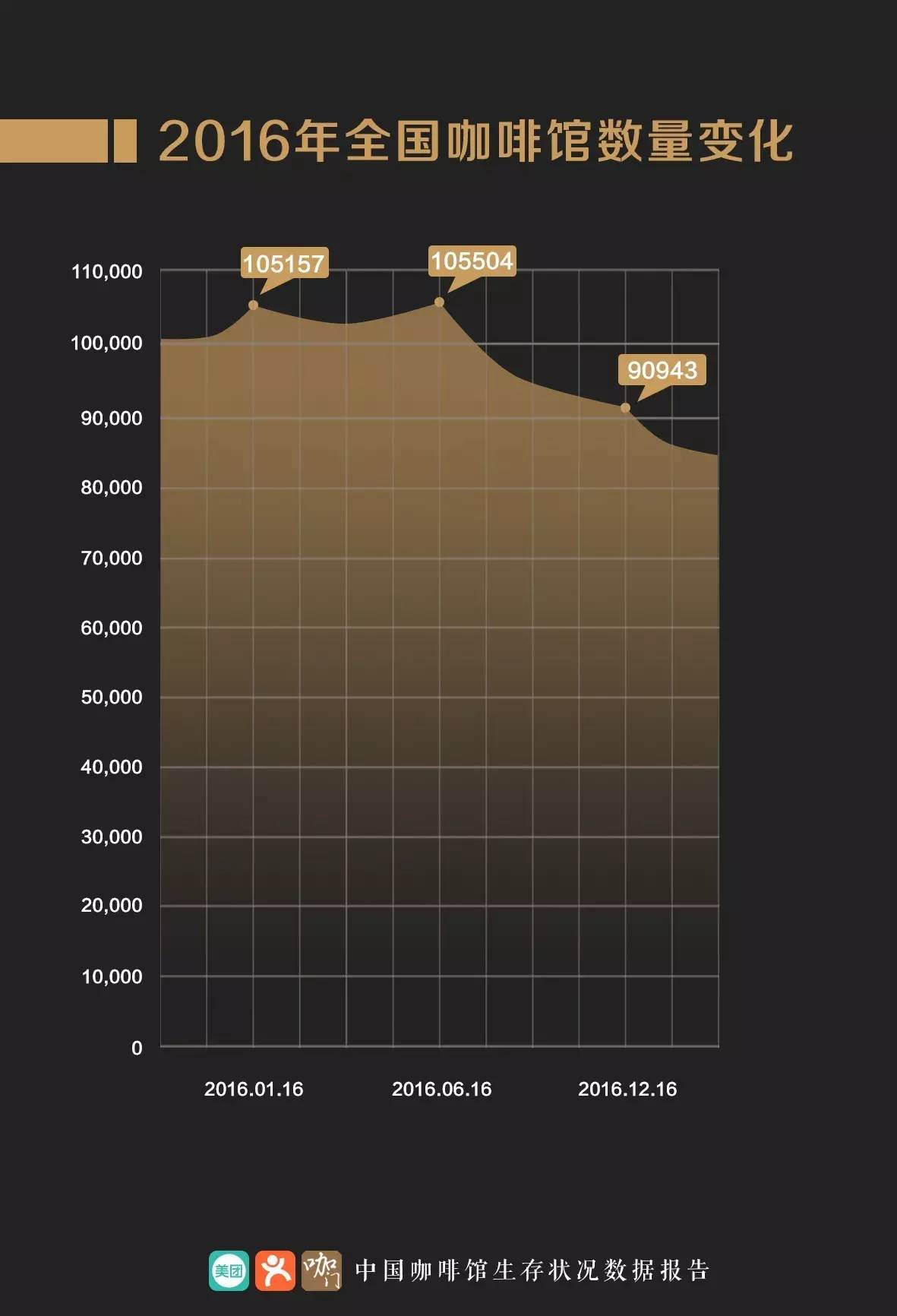
▲ grew slightly in the middle of the year, and industry reshuffle appeared in the second half of the year.
Conclusion
The number of cafes increased slightly in the middle of the year in 2016, but the net closure rate for the whole year was relatively high, reaching 13.5%.
The change in the number of cafes is parabolic, with a small annual growth, and a new round of reshuffle will be carried out in the industry in the second half of the year.
Cause analysis
1) the foundation of coffee market is weak
2) non-business-driven individual entrepreneurs who ignore the basic skills of business
3) mismatch between supply and demand in market segments
2
Coffee shop city ranking
Shanghai has the largest number of cafes, the lowest closure rate and the highest level of operation.
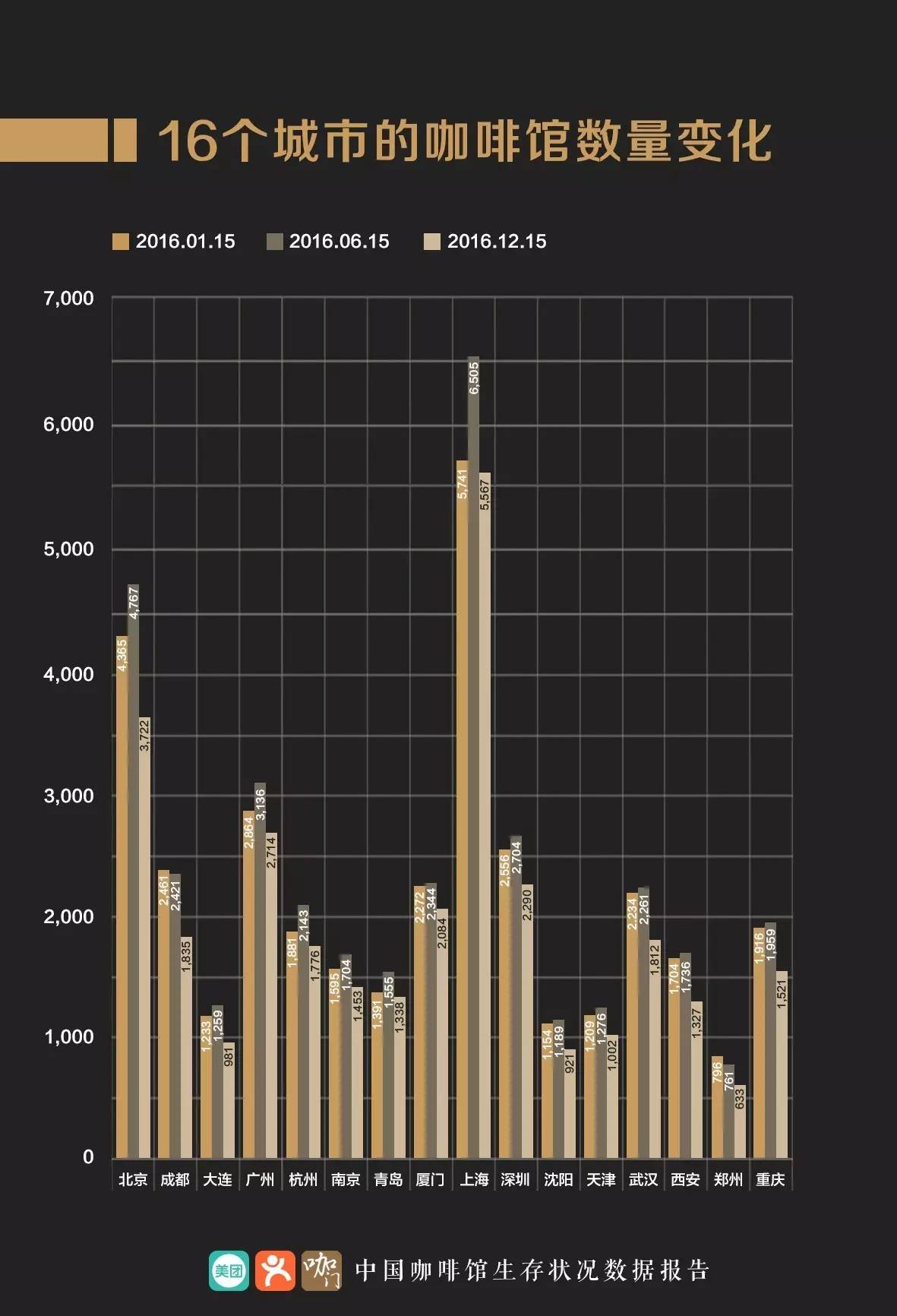
Changes in the number of cafes in 16 cities of ▲
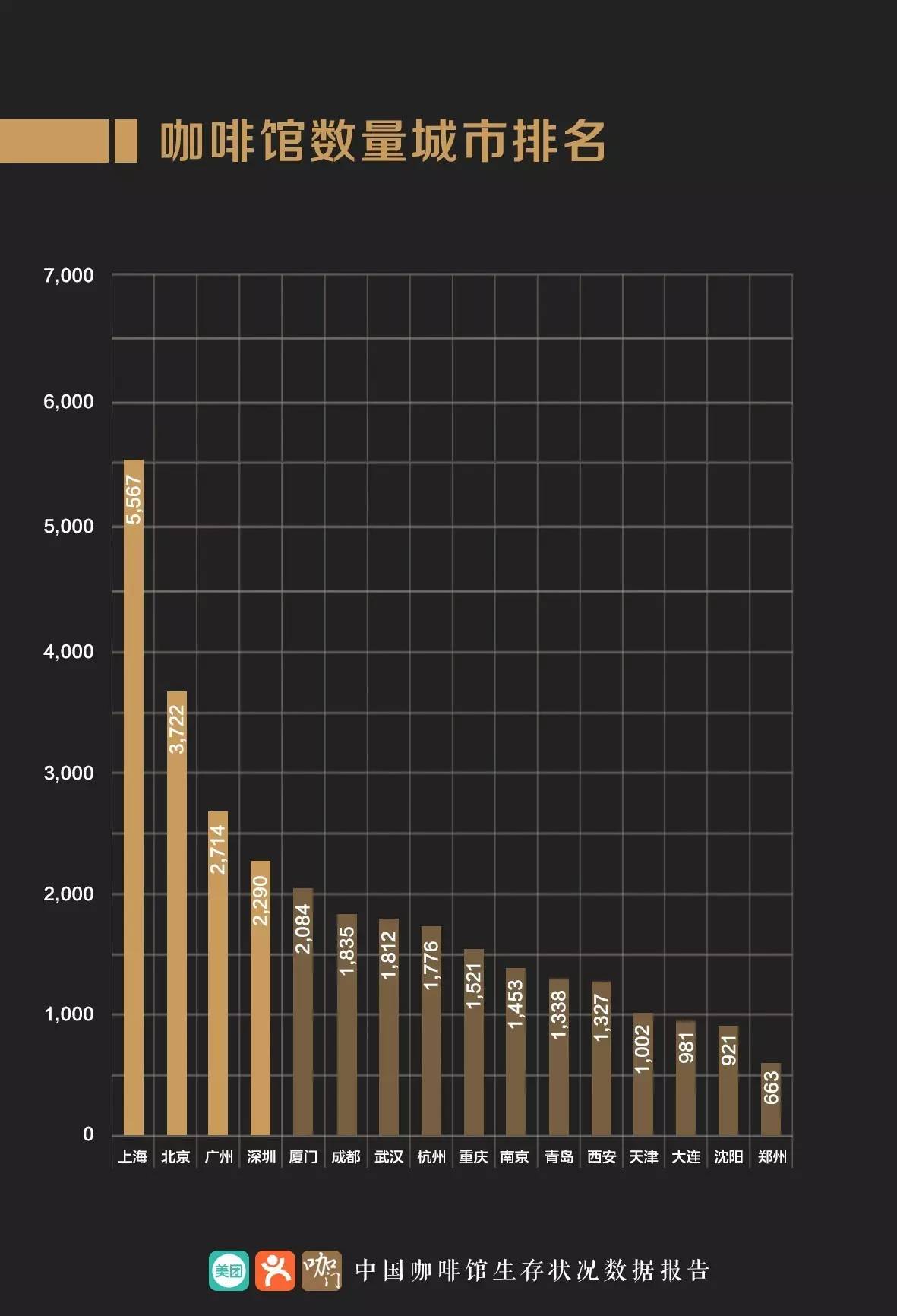
Ranking of cafes in 16 cities of ▲
Data analysis
1) the 16 cities extracted from the data showed negative growth, and the average closure rate was as high as 14.1%.
2) the lowest decline was 3.0% in Shanghai, 25.4% in Chengdu and 14.7% in Beijing.
3) the number of cafes in four super-first-tier cities in Beijing, Shanghai, Guangzhou and Shenzhen, accounting for 15.7% of the country's total.
2
Product thermal map:
30 yuan is the standard price, and the most popular one is "Classic".
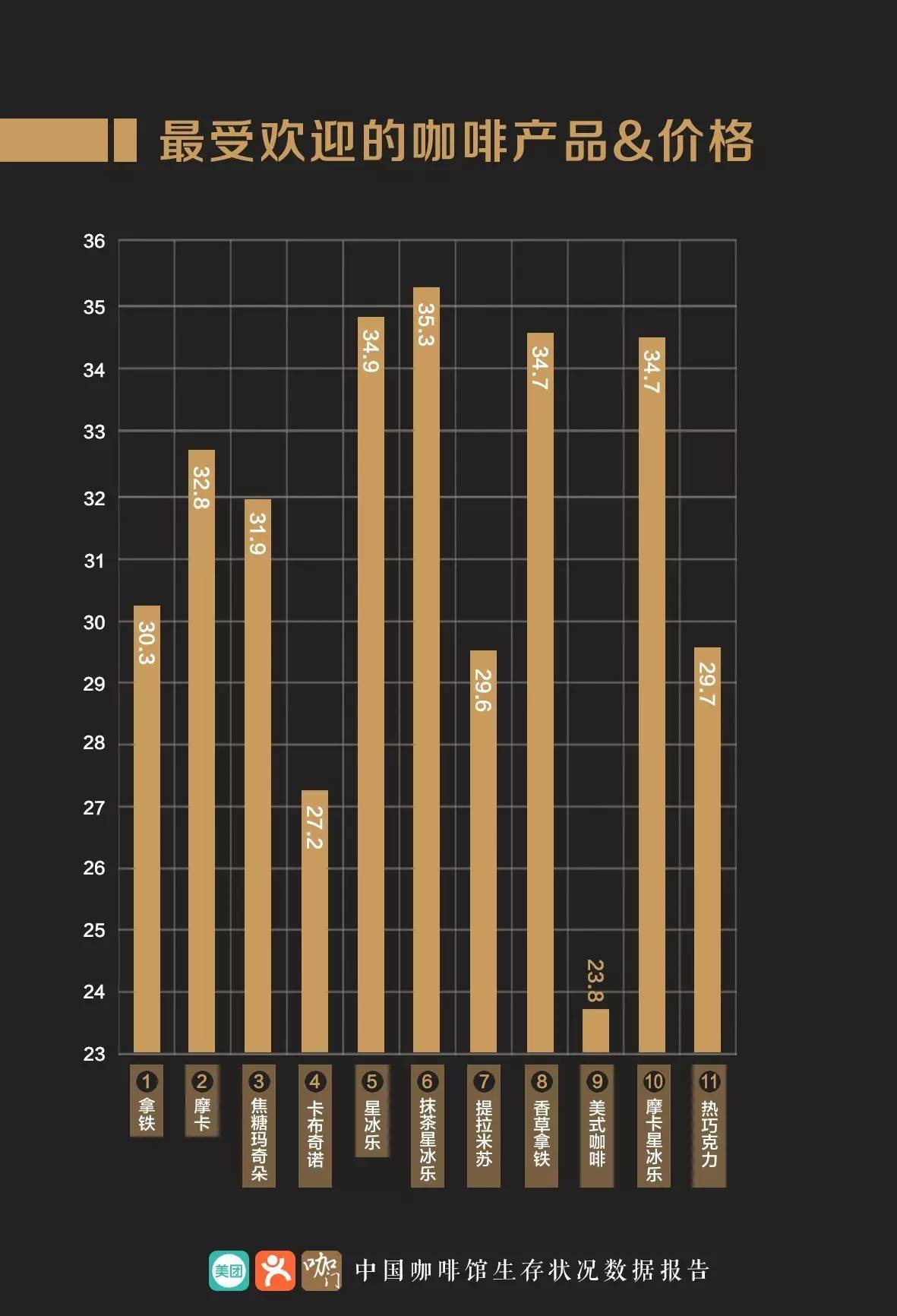
Ranking and price of ▲ coffee products
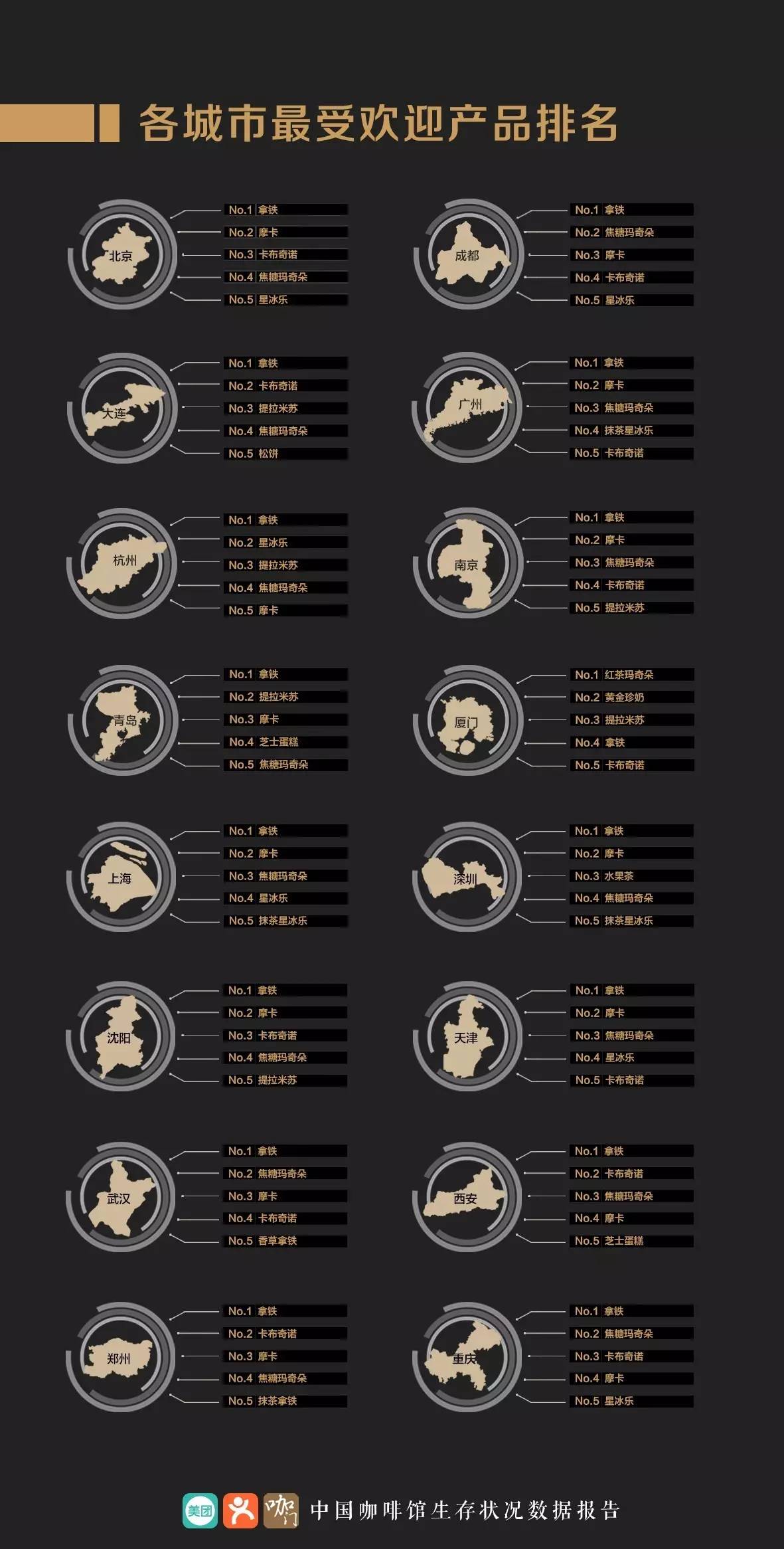
▲ ranking of the most popular products in 16 cities
Data analysis
1) the latte is an absolute "popular lover"
Of the 16 data extraction cities, 15 are lattes. Xiamen is the only exception, where young people's favorite drink is called "black tea macchiato".
2) consumers still love sugar and milk.
Milk-free and sugar-free American coffee almost fell off the list. The combination of milk, coffee and sugar is the most accepted by the public.
3) Starbucks has the highest guest list.
4) the most popular bakers are Tira Misu and muffins
Among the 16 major cities, muffins appear on the hottest list in eight cities.
5) Postcards are still popular
Among the 16 cities, postcards appear among the most popular products in Tianjin, Wuhan and Dalian.
3
User profile:
It is the young women who "save" the cafe.
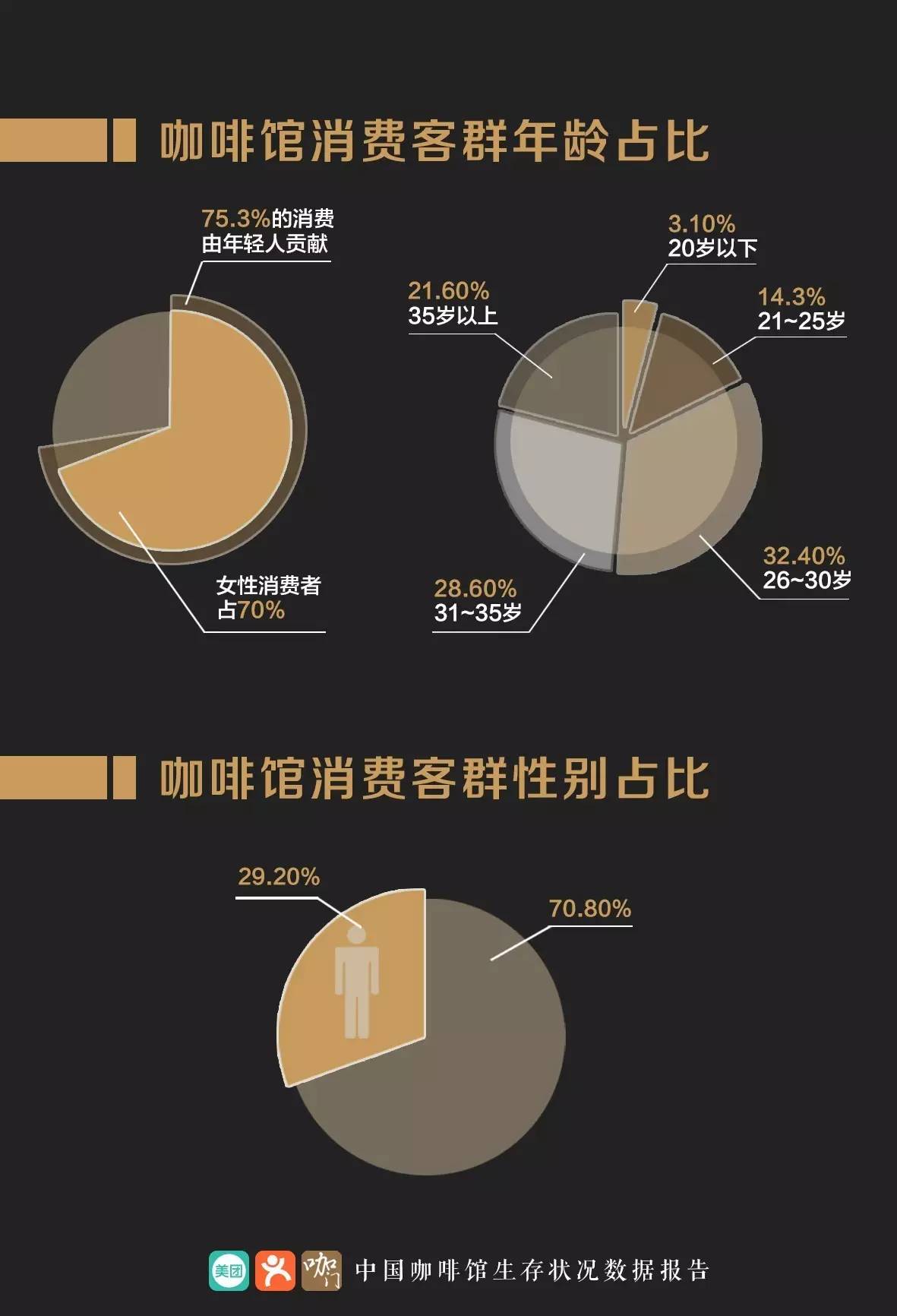
Age and gender proportion of consumers in ▲ Cafe
Conclusion
1) only women can save the cafe
In the statistics of user portraits, women account for 70% of the consumers in cafes.
2) Young people are the main force, contributing 75% of consumption
People between the ages of 20 and 35 contribute 75.3% of their coffee consumption.
In 2016, the post-80s and post-90s generation broke through 400 million people, becoming the main force of coffee consumption; the number of the middle class dominated by young people exceeded 100 million, and will exceed 250 million by 2030.
The emergence of this phenomenon will bring historic changes to China's consumption structure. It is the right choice to please young people in business.
4
Brand list:
The giant dominates the list, boutique coffee still has a chance.
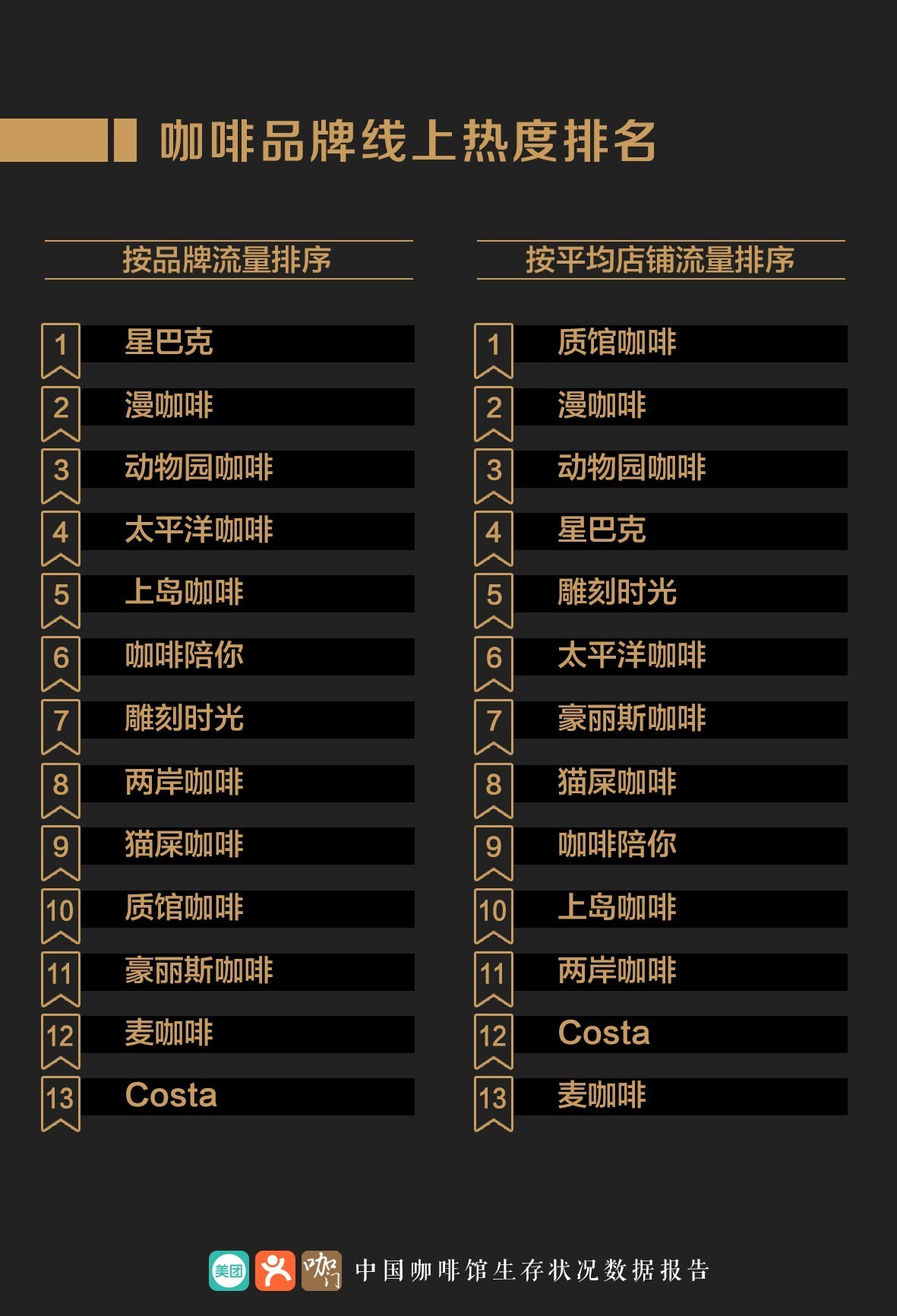
National online sales ranking of ▲ Coffee Brand
Conclusion:
1) traditional giant brands still dominate traffic
The traditional chain brands represented by Starbucks and Man Coffee are still ahead of other stores in terms of store traffic.
2) there is a chance of counterattack in fine coffee.
As the quality hall of boutique coffee, the average flow of each store ranks first, counterattacking the traditional giant Starbucks.
3) some giant brands are weak
No matter in terms of brand traffic or average traffic per store, Costa from the UK and McCoffee from McDonald's are unexpectedly at the bottom.
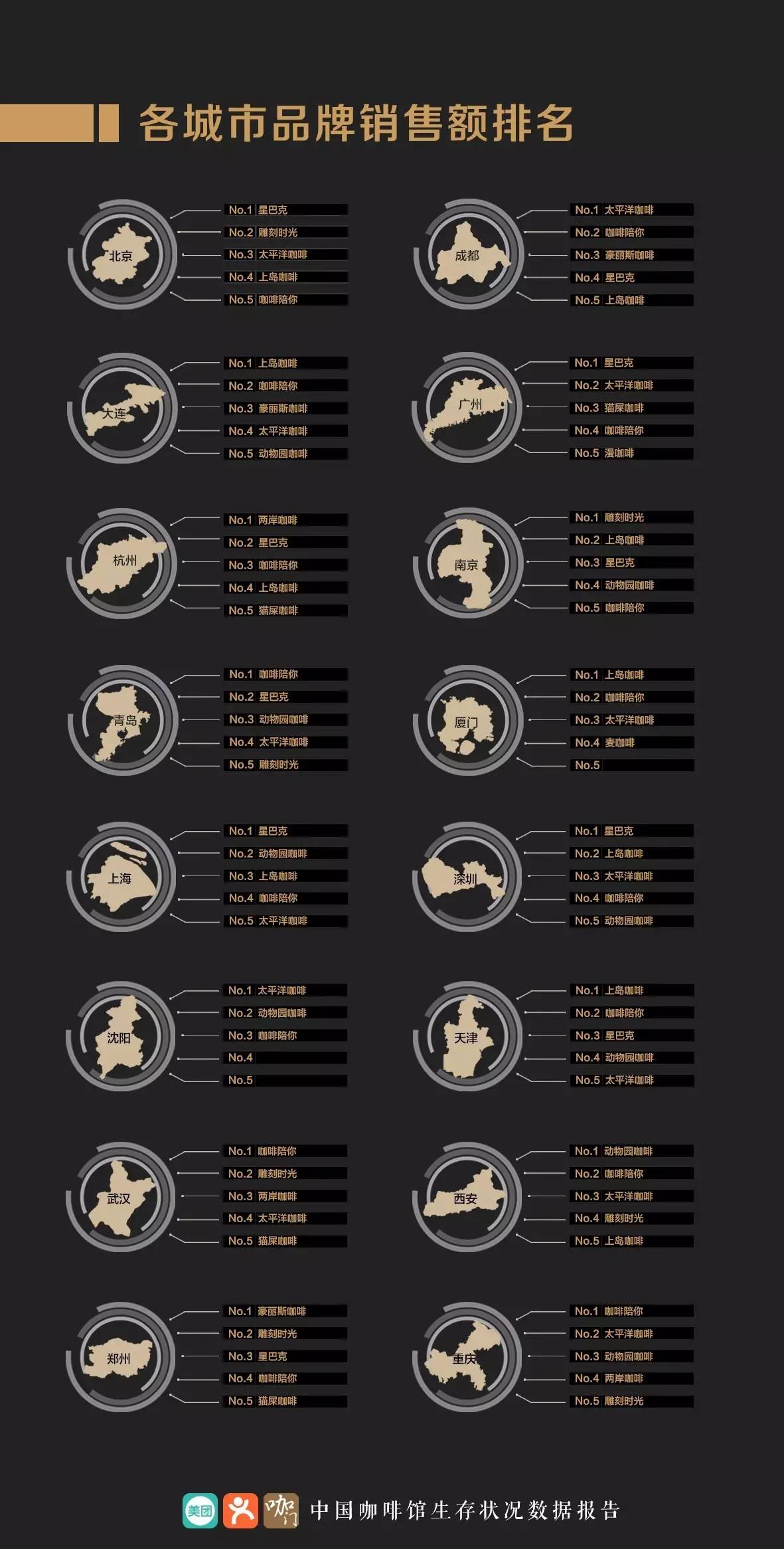
▲ City Cafe Brand sales ranking TOP5
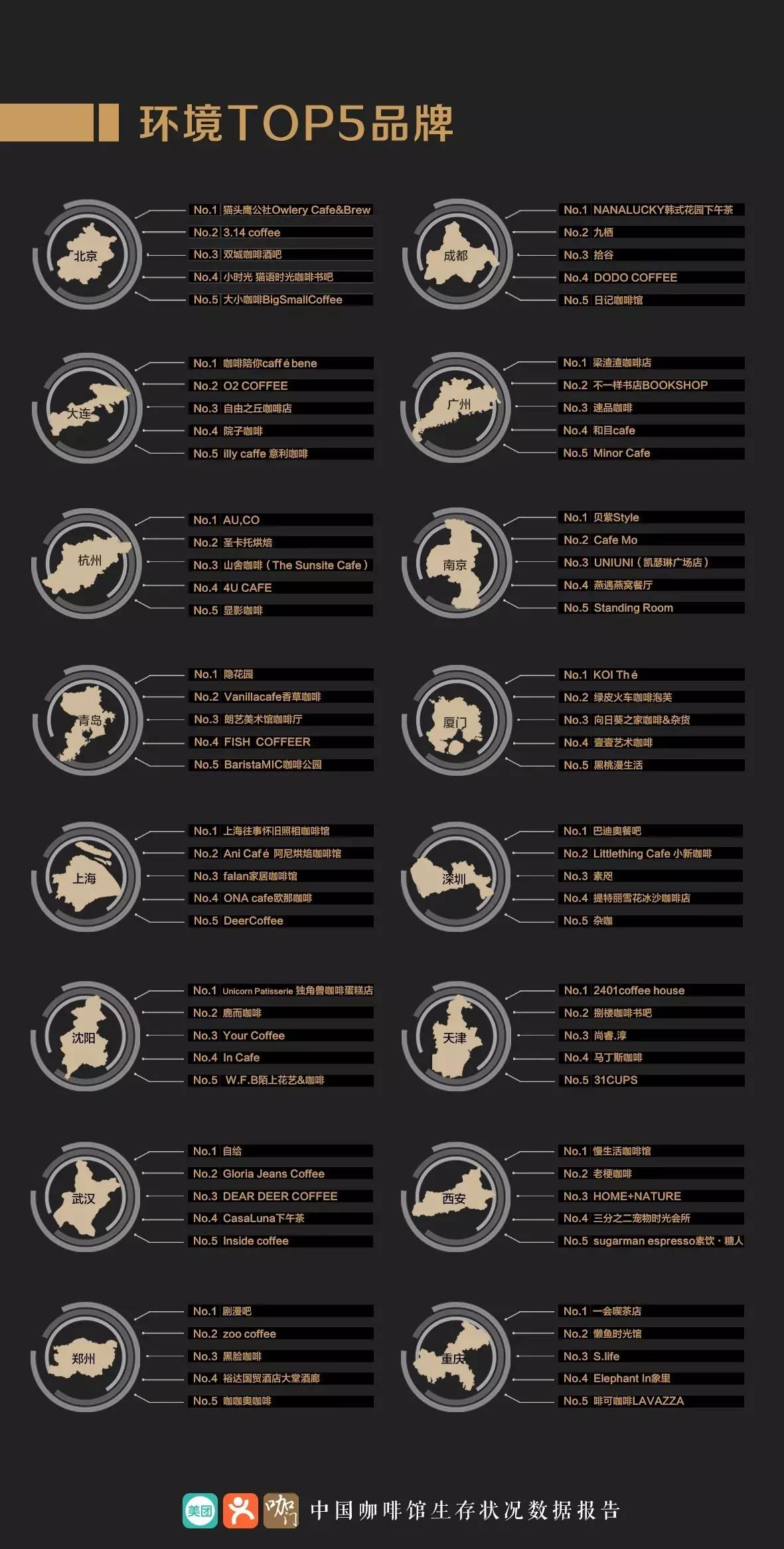
▲ City Cafe Environment ranking TOP5 Brand
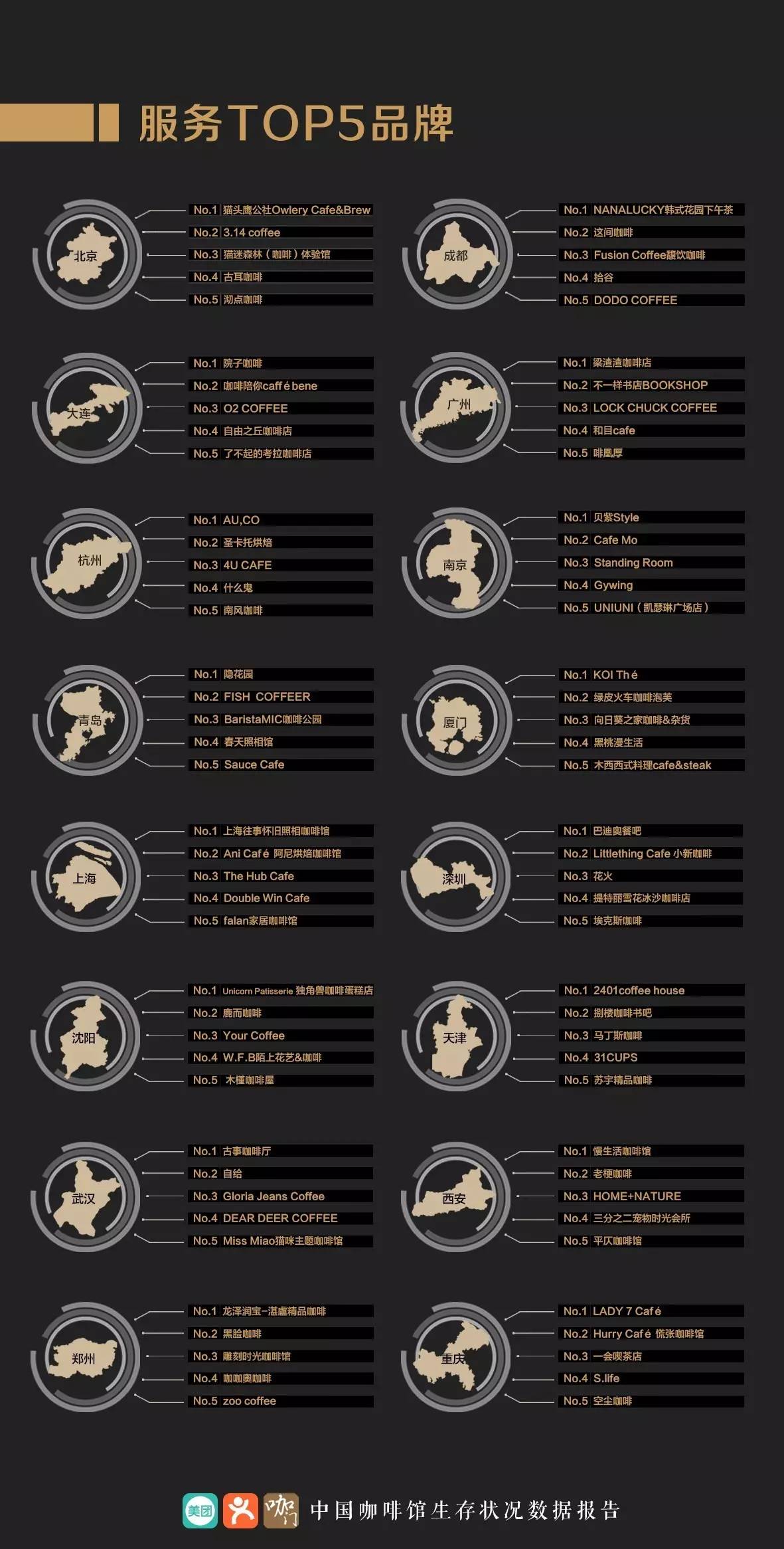
▲ City Cafe Service ranking TOP5 Brand
Conclusion:
"environmentally friendly" and "service nice" cafes, chain brands are not on the list, while independent cafes are at the top.
In 16 cities, the cafes' service quality and environmental quality index are all independent cafes. Except for carving time Cafe in one city, all the other cafes are independent cafes.
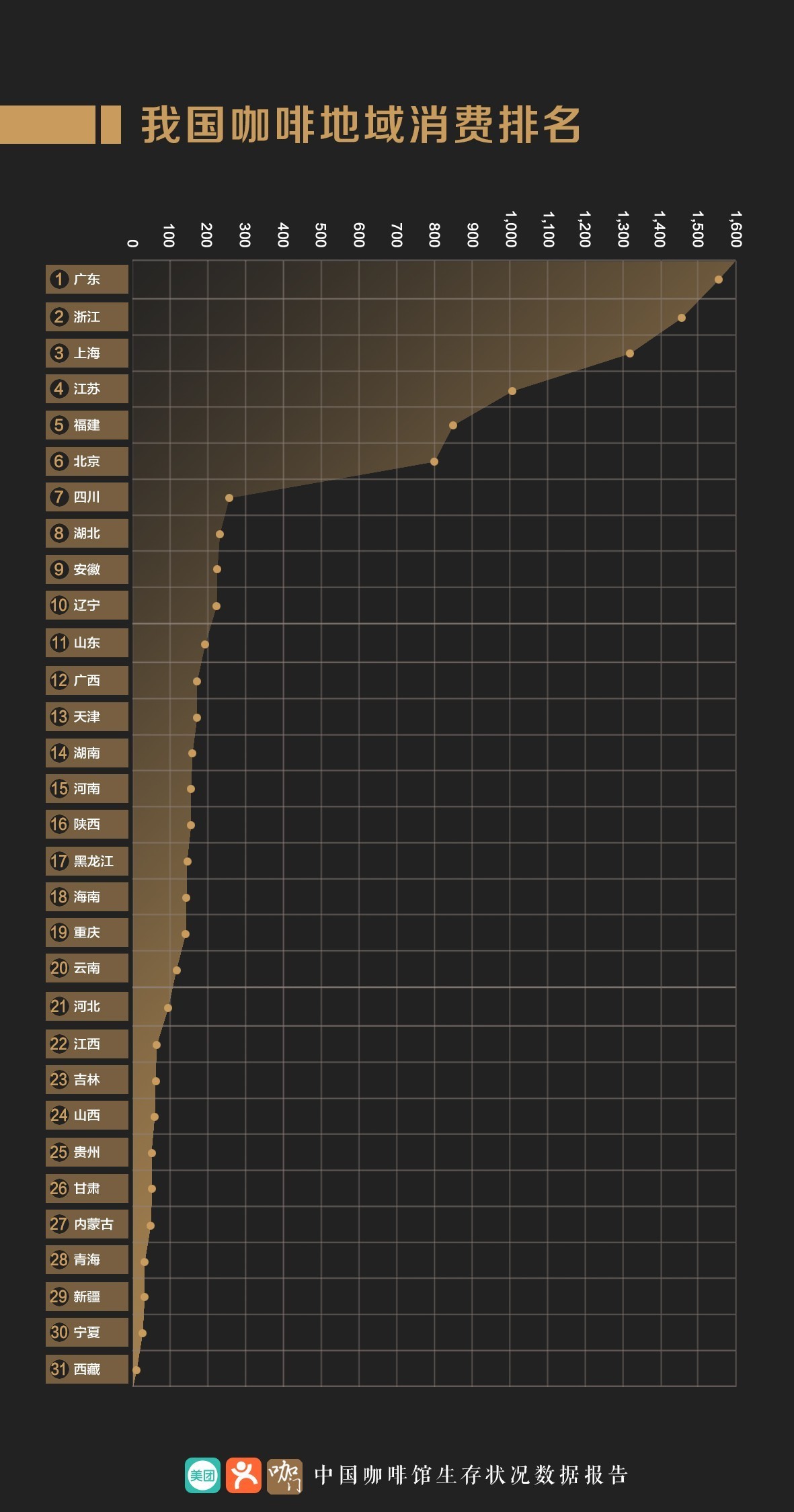
▲ ranking of Coffee Regional consumption Index in China
Important Notice :
前街咖啡 FrontStreet Coffee has moved to new addredd:
FrontStreet Coffee Address: 315,Donghua East Road,GuangZhou
Tel:020 38364473
- Prev
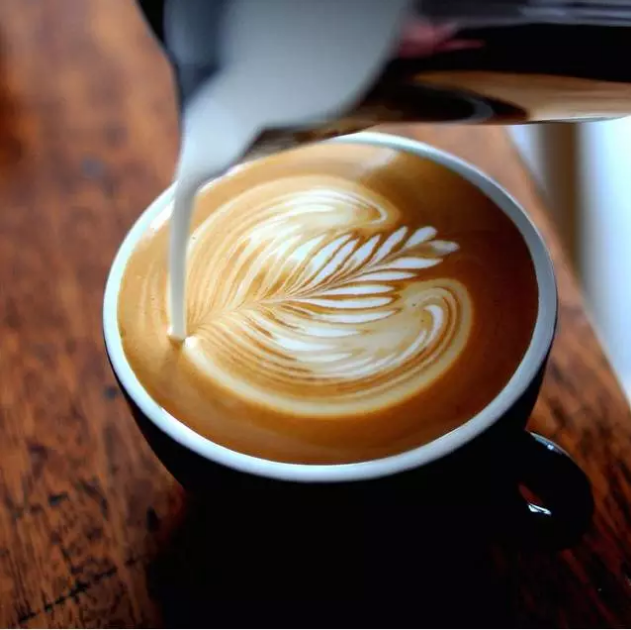
Do you understand so many varieties and places of origin as a required course for veteran coffee drivers?
Latte, macchiato, cappuccino, these espresso are almost everyone's initial understanding of coffee. We don't comment on the pros and cons of Starbucks espresso, but it does enlighten many people's love of coffee. I also used my pocket money to save stars a long time ago, and later, I gradually found that coffee without milk and milk is true love. About coffee.
- Next
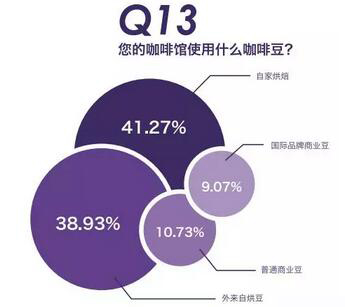
2017 Coffee Survey: the main survey data of coffee shops are made public.
The results of the National Cafe Survey of 2016-2017 Coffee Salon have been released. Whether you are a cafe owner, a barista or a coffee lover, if you want to understand the current situation and future development trend of the coffee industry, don't miss the statistical results. Interesting questions and data may give you a new assessment and business philosophy of the coffee industry. Oh, 2016-2017 National Cafe Survey.
Related
- What brand of black coffee is the most authentic and delicious? what are the characteristics of the flavor of the authentic Rose Summer Black Coffee?
- Introduction to the principle and characteristics of the correct use of mocha pot A detailed course of mocha pot brewing coffee is described in five steps.
- Which is better, decaf or regular coffee? how is decaf made?
- How much is a bag of four cat coffee?
- How about four Cat Coffee or Nestle Coffee? why is it a cheap scam?
- Which is better, Yunnan four Cats Coffee or Nestle Coffee? How about cat coffee? is it a fake scam? why is it so cheap?
- How about Cat Coffee? what grade is a hoax? which instant coffee tastes better, four Cat Coffee, Nestle Coffee or G7 coffee?
- Process flow chart of coffee making-Starbucks coffee making process what coffee tastes good at Starbucks
- The top ten best coffee beans in the world Rose summer coffee or Tanzanian coffee tastes good
- Yunnan four cat coffee is good to drink?_four cat coffee is a big brand? four cat blue mountain coffee is fake?

